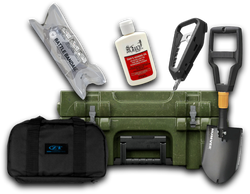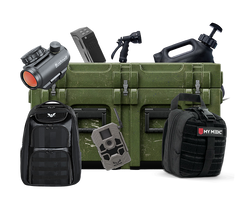How Good is Boxing for Self-Defense?
Table of Contents
- Introduction
- The Fundamentals of Boxing
- Advantages of Boxing for Self-Defense
- Limitations of Boxing for Self-Defense
- Practical Application of Boxing for Self-Defense
- Conclusion
- FAQs
Introduction
Imagine walking down a dimly lit street when you suddenly find yourself confronted by an aggressive stranger. What would you do? The reality is that self-defense situations can arise unexpectedly, and being prepared can make all the difference. One of the most effective combat sports that individuals often turn to for self-defense techniques is boxing. But just how good is boxing for self-defense?
Boxing is not merely a sport; it’s a comprehensive system of movement, strategy, and physical conditioning that has been honed over centuries. This blog post will delve into the various aspects of boxing, exploring its effectiveness for self-defense. You'll learn about the skills boxing imparts, the advantages and disadvantages of using boxing techniques in real-world situations, and how to effectively integrate boxing into your self-defense strategy.
By the end of this post, you will gain a deeper understanding of why boxing is often recommended as an effective form of self-defense, and how it can empower you to handle confrontations with confidence.
Let’s break down the key elements that make boxing a powerful tool for self-defense and provide insights into how you can apply these techniques in real-life scenarios.
The Fundamentals of Boxing
1. Mastering the Basics
Boxing is grounded in fundamental techniques that focus on striking with the fists. To effectively use boxing for self-defense, you need to master the following:
-
Footwork: Good boxing starts with solid footwork. Boxers learn to move fluidly, using their footwork to create angles, evade attacks, and position themselves for strikes. This fluidity is crucial in self-defense situations, allowing you to maintain balance and escape if necessary.
-
Punching Techniques: Boxing teaches a variety of punches, including jabs, crosses, hooks, and uppercuts. The mechanics behind these punches involve body rotation and weight transfer, which can amplify their power. Understanding how to throw effective punches can drastically improve your chances of defending yourself.
-
Defense: Boxing emphasizes defensive techniques such as slipping, bobbing, weaving, and blocking. These skills can help you avoid incoming strikes, making you a harder target in self-defense situations.
2. Building Physical Conditioning
Boxing is an intense workout that develops various physical attributes:
-
Strength: The act of punching develops upper-body strength, particularly in the shoulders, arms, and core. This strength is vital for delivering powerful strikes that can end a confrontation quickly.
-
Speed: Boxing training enhances hand speed and reaction time, enabling you to respond to threats more effectively. A fast punch can disorient an attacker and create an opportunity to escape.
-
Endurance: The high-intensity training involved in boxing builds cardiovascular endurance, allowing you to maintain energy and focus even in high-stress situations.
3. Mental Preparedness
Boxing instills a sense of mental toughness. Training under pressure teaches you how to stay calm and focused during confrontations. This mental conditioning helps you make quick decisions and react appropriately in stressful environments. Furthermore, the discipline and respect inherent in boxing training foster humility and a better understanding of conflict resolution.
Advantages of Boxing for Self-Defense
1. Effective Striking Power
Boxers are renowned for their striking capabilities. The training undergone allows them to deliver powerful punches with precision. In a self-defense situation, the ability to end a confrontation with a single well-placed punch can be invaluable.
2. Superior Defensive Skills
Boxing teaches some of the best defensive techniques available. The head movement, footwork, and ability to read an opponent’s body language allow boxers to avoid and deflect strikes effectively. This defensive acumen is crucial when facing an untrained attacker who may rely on wild, aggressive swings.
3. Enhanced Situational Awareness
Training in boxing sharpens your ability to assess and respond to your surroundings. Boxers learn to read their opponents' movements, allowing them to anticipate attacks. This heightened awareness can help you identify potential threats before they escalate.
4. Improved Confidence
The physical and mental training that comes with boxing instills confidence. Knowing that you have the skills to defend yourself can deter potential attackers and help you handle confrontations with a calm demeanor.
5. Physical Fitness
Boxing is an excellent way to maintain physical fitness. A strong, agile body is less likely to succumb to injury during a confrontation. Additionally, regular training improves overall health, which is vital for long-term self-defense preparedness.
6. Community Support
Joining a boxing gym or training group creates a sense of community. This network can provide not only camaraderie and support but also opportunities for sparring and real-time practice, which are essential for refining your skills.
Limitations of Boxing for Self-Defense
1. Lack of Grappling Techniques
While boxing is highly effective for striking, it does not cover grappling or ground fighting. If a confrontation goes to the ground, a boxer may be at a disadvantage against someone who has grappling skills. It’s essential to recognize this limitation and consider supplementing boxing training with grappling disciplines such as Brazilian Jiu-Jitsu.
2. Limited Defense Against Kicks
Boxing does not prepare you for leg kicks or other lower body attacks, which can be crucial in self-defense scenarios. Understanding how to defend against kicks and incorporating some basic kick defense techniques can enhance your overall self-defense strategy.
3. Over-Reliance on Punching
In a self-defense situation, it’s easy to rely solely on punching techniques. However, this narrow focus might limit your effectiveness against an attacker who employs a variety of tactics. A well-rounded approach that includes situational awareness and escape strategies is essential.
4. Risk of Injury
Engaging in physical confrontations, even with boxing training, carries the risk of injury. Boxers often sustain injuries, including broken hands, when striking hard surfaces without proper protection. Understanding how to punch effectively without damaging yourself is vital.
Practical Application of Boxing for Self-Defense
1. Stay on Your Feet
In a self-defense scenario, maintaining your balance and staying upright is crucial. Ground fighting can put you at risk, especially against multiple attackers. Use your footwork to stay mobile and create distance.
2. Use Your Jab
The jab is one of the most effective tools in boxing for self-defense. It allows you to create distance, disrupt your opponent’s rhythm, and set up more powerful strikes. In a self-defense situation, use your jab to keep attackers at bay and create openings for follow-up punches.
3. Maintain Awareness of Your Surroundings
Always be aware of your environment. This awareness allows you to identify potential threats and choose the best course of action. If escape is possible, take it. If confrontation is unavoidable, use your boxing skills to defend yourself effectively.
4. Practice Situational Drills
Regularly practice scenarios that simulate potential self-defense situations. This can include drills with training partners where you practice responding to aggressive movements or evading attacks. The more you practice, the more instinctive your responses will become.
Conclusion
Boxing is a highly effective martial art for self-defense, offering numerous advantages in striking, defense, and physical conditioning. While it may have limitations, such as a lack of grappling techniques and kick defenses, its strengths often outweigh these drawbacks in typical self-defense situations.
Training in boxing can empower you with the skills, confidence, and awareness necessary to handle confrontations effectively. However, to maximize your self-defense capabilities, consider complementing boxing with additional training in other martial arts, especially those that address grappling and ground fighting.
As you embark on your self-defense journey, remember that preparedness is key. Equip yourself with the right skills and knowledge, and join a community of like-minded individuals who share your commitment to personal safety and empowerment.
If you are looking to take the next step in your self-defense journey, consider exploring the curated tactical gear available at Crate Club. Their monthly subscription service offers essential survival tools and equipment that can enhance your preparedness for any situation. Additionally, check out the Crate Club Shop for high-quality gear that can support your training and self-defense needs.
FAQs
What are some of the best ways to practice boxing for self-defense?
- Join a boxing gym: Regular training with experienced coaches will refine your techniques.
- Spar with partners: Sparring helps you apply techniques in realistic scenarios.
- Shadow boxing: Practicing movements and combinations alone will improve your form.
- Focus on footwork drills: These drills enhance your mobility and positioning.
What are the most typical boxing-for-self-defense mistakes?
- Overcommitting to punches: Avoid focusing solely on striking; it’s essential to maintain awareness of your surroundings.
- Neglecting defense: Always practice defensive techniques alongside your offensive skills.
- Failing to practice escapes: Train to disengage or escape when necessary.
What self-defense boxing abilities are essential?
- Effective jab: This helps maintain distance and control.
- Head movement: Avoiding strikes is critical in a confrontation.
- Footwork: Being agile and mobile can provide advantages during an attack.
What other self-defense methods are useful?
Consider integrating skills from martial arts such as Brazilian Jiu-Jitsu for ground defense, Krav Maga for real-world scenarios, and Muay Thai for clinch and kick defenses.
What are the drawbacks of self-defense boxing?
- Limited grappling knowledge can leave you vulnerable if a fight goes to the ground.
- Less awareness of other attacks, such as kicks or weapons.
- Potential for injury if proper technique is not maintained.
In closing, training in boxing can significantly enhance your self-defense capabilities, but it's essential to adopt a comprehensive approach that incorporates various skills. Stay prepared, stay aware, and empower yourself through training.
Comparte este artículo



